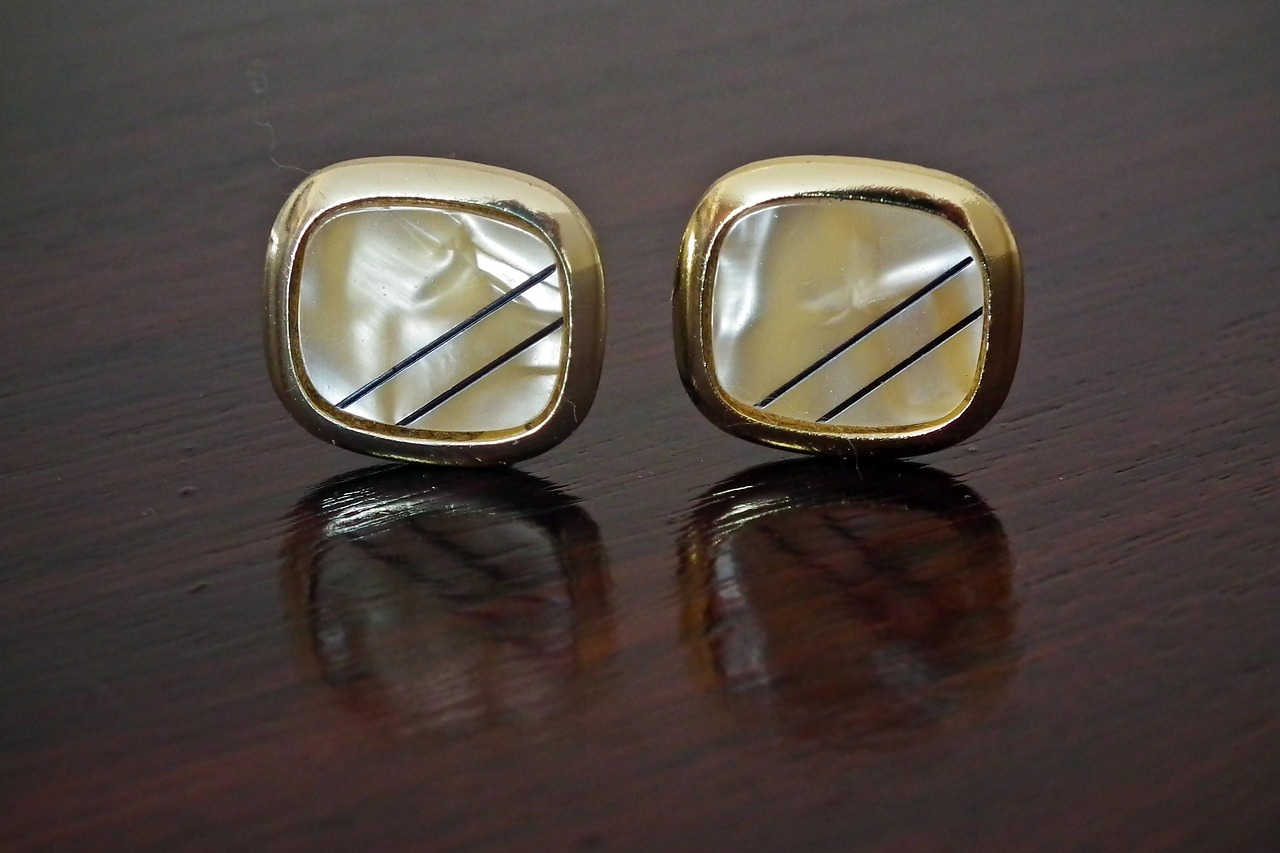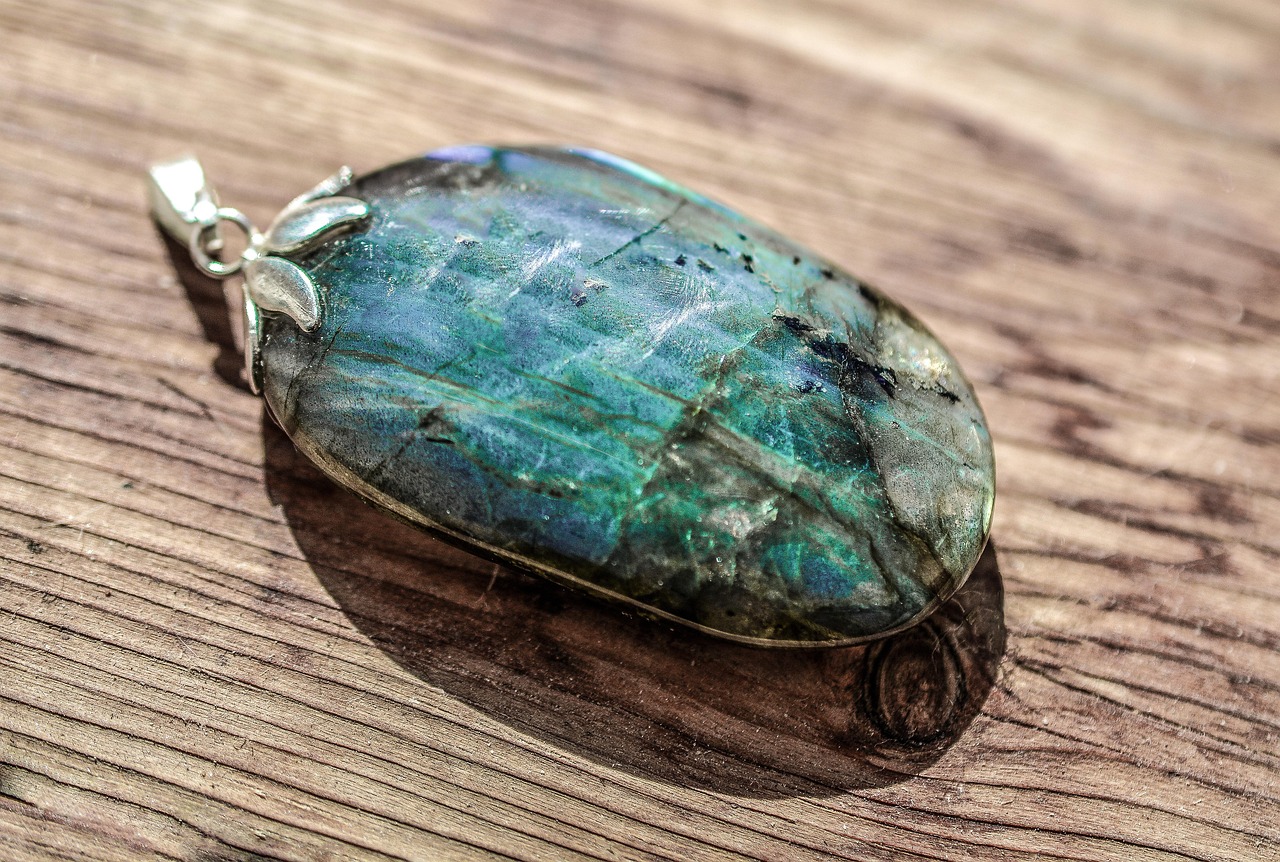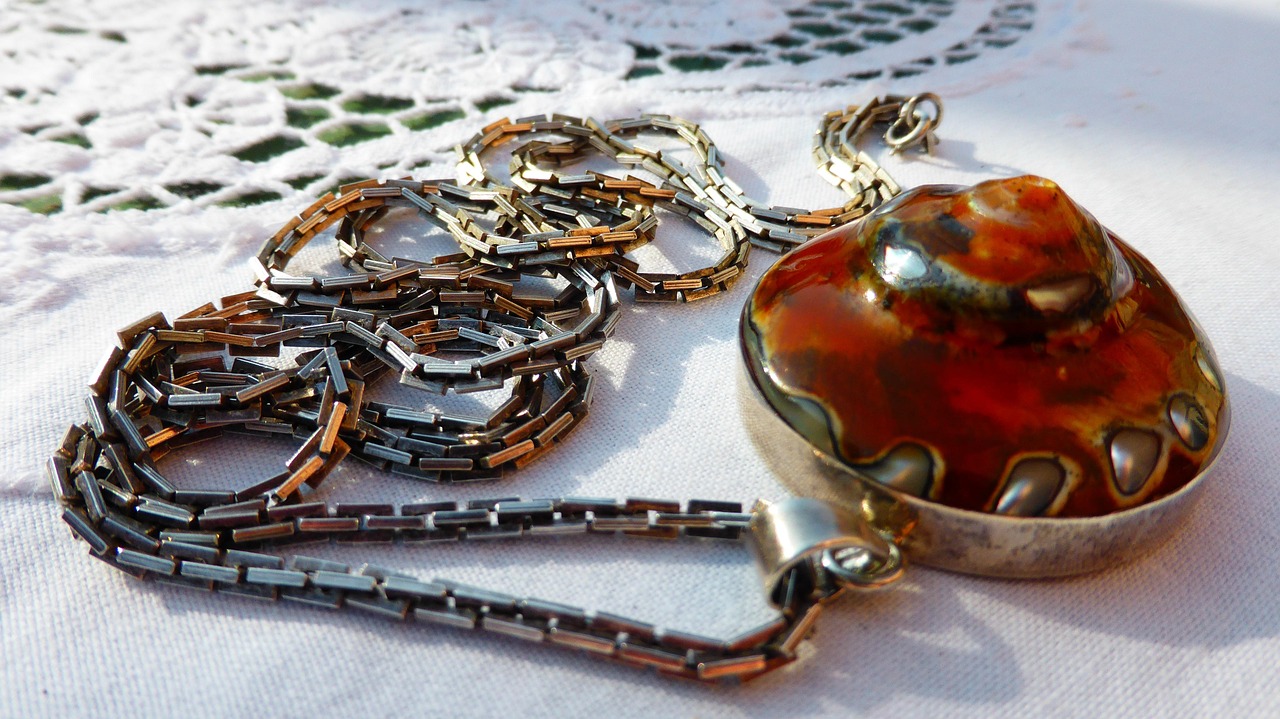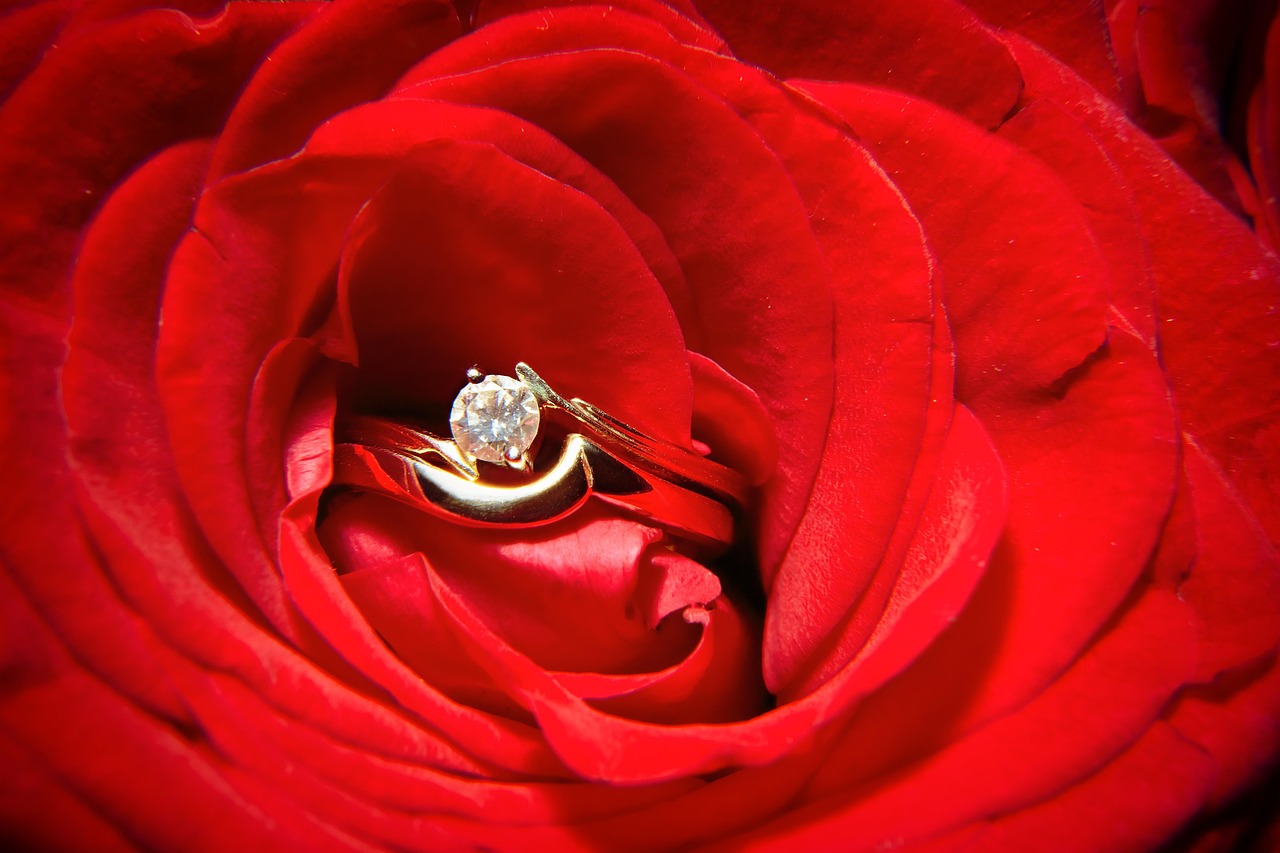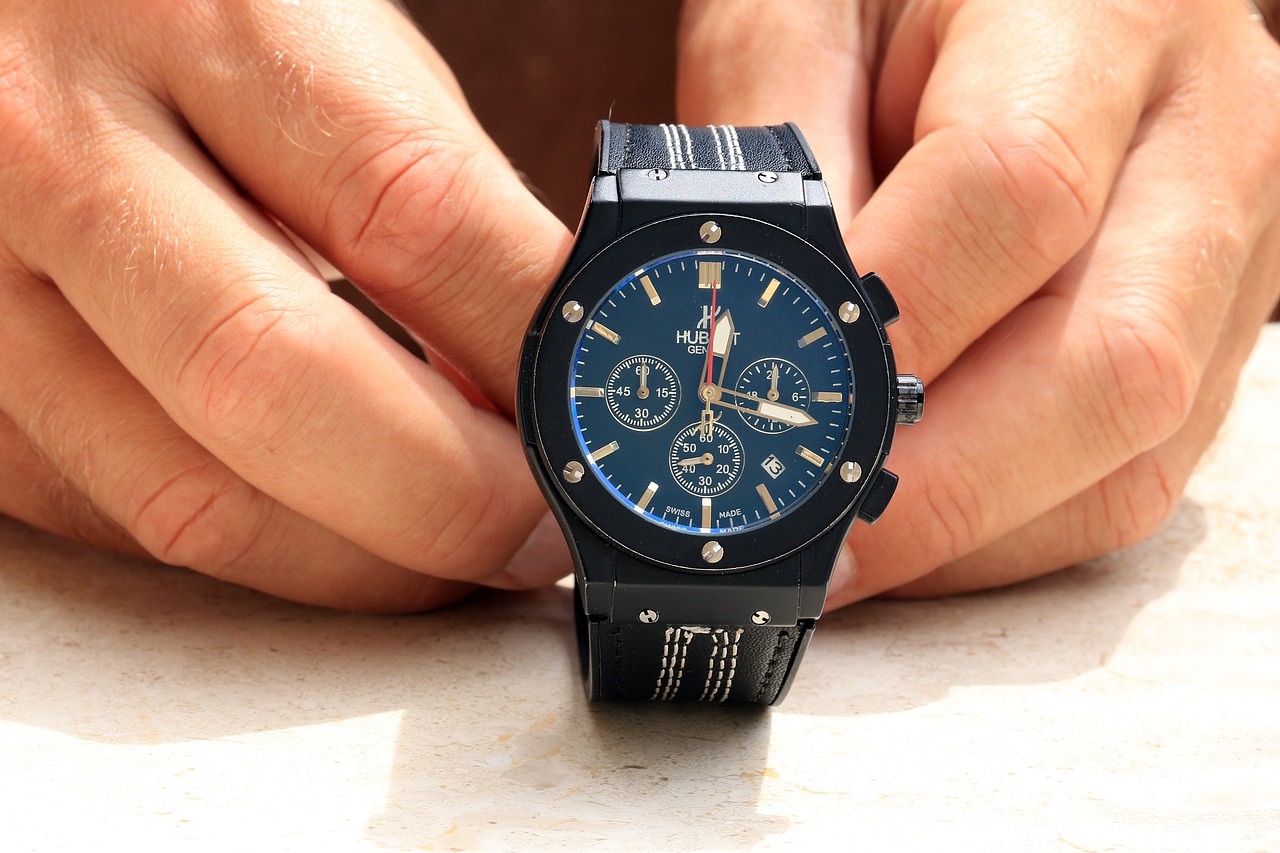This article delves into the 4Cs of diamonds—Cut, Color, Clarity, and Carat weight—and examines how these critical factors influence the resale value of diamonds in the market.
The 4Cs are pivotal in assessing diamond quality. They serve as a universal language in the diamond industry, helping buyers and sellers understand a diamond’s value and desirability. Each of the 4Cs plays a unique role in determining the overall worth of a diamond in the resale market.
The cut of a diamond is arguably the most significant factor affecting its brilliance and overall aesthetic appeal. A diamond that is cut to ideal proportions will reflect light beautifully, enhancing its value and attractiveness to potential buyers.
- Excellent
- Very Good
- Good
- Fair
- Poor
Cut grades range from Excellent to Poor, and higher grades result in better light performance, which directly correlates to increased resale value.
Proportions, including depth and table size, are vital for optimal light reflection. Ideal proportions can significantly elevate a diamond’s visual appeal and, consequently, its resale price.
Color refers to the presence of any hue within a diamond. Generally, the less color a diamond exhibits, the more valuable it is, which has a direct impact on its resale potential.
The GIA color grading scale ranges from D (colorless) to Z (light yellow). Diamonds graded D-F are typically the most sought after and command higher prices in the market.
Market preferences can shift over time, influencing the demand for specific color grades. Understanding these trends can help sellers position their diamonds effectively to maximize resale value.
Clarity measures the presence of internal or external flaws in a diamond. Higher clarity grades usually result in greater value and desirability in the resale market.
The clarity grading scale ranges from Flawless to Included, with Flawless diamonds being the most valuable. Understanding this scale helps buyers and sellers accurately assess worth.
Inclusions can diminish a diamond’s beauty and value. Sellers should be aware of how these imperfections impact market appeal and pricing, as they can significantly affect resale opportunities.
Carat weight is a key determinant of a diamond’s size and value. Larger diamonds are generally more desirable, but the relationship between carat weight and price is not linear.
Understanding current market trends regarding carat weight can help sellers price their diamonds competitively. Buyers often have preferences for specific weights, which can directly impact resale value.
While carat weight is essential, the interaction between all 4Cs determines overall value. A smaller diamond with superior quality can sometimes be more valuable than a larger, lower-quality stone.
The cumulative effect of the 4Cs plays a significant role in determining a diamond’s resale value. Each factor contributes to the overall desirability and marketability of the diamond.
Market demand fluctuates based on consumer preferences and trends. Sellers should stay informed about these shifts to maximize their diamonds’ resale potential.
Effective selling strategies involve highlighting the strengths of each diamond’s 4Cs. Providing detailed information can enhance buyer confidence and improve resale outcomes.

What Are the 4Cs of Diamonds?
The diamond industry is governed by a set of criteria known as the 4Cs, which stand for Cut, Color, Clarity, and Carat weight. These four essential factors are pivotal in assessing diamond quality and play a crucial role in determining a diamond’s value and desirability in the marketplace. Understanding the 4Cs not only aids buyers in making informed decisions but also helps sellers maximize the value of their diamonds when it comes time to resell.
The 4Cs serve as the foundation for evaluating the quality of diamonds. Each aspect contributes uniquely to the overall appearance and market value of the stone:
- Cut: Refers to how well the diamond has been shaped and faceted, influencing its brilliance and sparkle.
- Color: Measures the presence of color in a diamond, with less color generally indicating higher value.
- Clarity: Assesses the presence of internal or external flaws, affecting the stone’s beauty and worth.
- Carat weight: Indicates the size of the diamond, with larger stones often commanding higher prices.
The cut of a diamond is arguably the most significant of the 4Cs. A well-executed cut allows light to enter the diamond and reflect back to the viewer, creating a stunning display of brilliance. Poorly cut diamonds may appear dull and lifeless, regardless of their other qualities.
Color grading in diamonds ranges from D (colorless) to Z (light yellow). The less color present, the more valuable the diamond tends to be. Color can significantly impact the resale value, with colorless diamonds generally fetching higher prices.
Clarity measures the presence of imperfections or inclusions within a diamond. Higher clarity grades indicate fewer visible flaws, which contributes to a diamond’s overall appeal and market value. Diamonds graded as Flawless are among the most sought after and can command premium prices.
Carat weight is a straightforward measure of a diamond’s size. While larger diamonds are often more desirable, the relationship between carat weight and price is not linear. A smaller diamond with exceptional quality in the other 4Cs can be more valuable than a larger stone with inferior characteristics.
The cumulative effect of the 4Cs plays a significant role in determining a diamond’s resale value. Each factor contributes to the overall desirability and marketability of the diamond. Understanding current market trends regarding the 4Cs can help sellers price their diamonds competitively and effectively.
Market demand fluctuates based on consumer preferences and trends related to the 4Cs. Sellers should stay informed about these shifts to maximize their diamonds’ resale potential. For instance, certain colors may become more popular over time, influencing the desirability of specific diamonds.
When selling diamonds, highlighting the strengths of each diamond’s 4Cs is crucial. Providing detailed information about the cut, color, clarity, and carat weight can enhance buyer confidence and improve resale outcomes. Sellers should also consider obtaining a grading report from a reputable gemological laboratory to substantiate their claims and attract potential buyers.
In summary, understanding the 4Cs of diamonds is essential for anyone involved in buying or selling these precious gems. By recognizing how each factor influences value and desirability, stakeholders can make informed decisions that maximize the potential of their diamond investments.

How Does Cut Impact Diamond Value?
The cut of a diamond is one of the most critical factors influencing its overall value and beauty. It is not merely about the shape of the diamond; rather, it encompasses how well the diamond is crafted to reflect light. A diamond’s cut can significantly enhance its brilliance, fire, and scintillation, making it more appealing to potential buyers.
The cut of a diamond determines how light enters and exits the stone. A well-cut diamond will reflect light from its facets back to the observer’s eye, creating a stunning visual effect. In contrast, a poorly cut diamond may allow light to escape from the sides or bottom, resulting in a dull appearance. This difference can dramatically affect the perceived value of the diamond.
Cut grades are typically categorized from Excellent to Poor. A diamond graded as Excellent will exhibit superior light performance, while a Poorly cut diamond will lack brilliance. The cut grade is often the first aspect buyers consider, and diamonds with higher cut grades tend to command higher prices in the market.
Proportions play a vital role in determining the quality of a diamond’s cut. Key proportions include:
- Table Size: The flat surface on the top of the diamond.
- Depth Percentage: The height of the diamond compared to its width.
- Crown Angle: The angle of the diamond’s upper facets.
- Pavilion Angle: The angle of the lower facets.
When these proportions are balanced, they create optimal light reflection and enhance the diamond’s visual appeal. Diamonds that achieve ideal proportions often have a higher resale value.
Consumer preferences can significantly impact the demand for certain cut styles. For example, round brilliant cuts are highly sought after due to their exceptional light performance. In contrast, fancy shapes like princess or emerald cuts may appeal to buyers looking for something unique. Understanding these preferences can help sellers position their diamonds more effectively in the marketplace.
The cut is one of the four key attributes, known as the 4Cs (Cut, Color, Clarity, Carat weight), that determine a diamond’s quality. While the other Cs are important, the cut often has the most immediate effect on a diamond’s appearance. A diamond with a lower carat weight but an excellent cut can appear more brilliant than a larger diamond with a poor cut.
When selling a diamond, highlighting the cut quality can significantly enhance its appeal. Sellers should provide potential buyers with detailed information about the cut grade and proportions. High-quality images showcasing the diamond’s brilliance can also help attract buyers. By emphasizing the cut, sellers can justify a higher asking price and improve their chances of a successful sale.
In summary, the cut of a diamond is a fundamental aspect that greatly influences its value and desirability. Understanding how cut affects light performance, consumer preferences, and overall quality is essential for both buyers and sellers in the diamond market. By focusing on cut quality, sellers can maximize their diamonds’ resale potential and appeal to discerning buyers.
Understanding Different Cut Grades
When it comes to diamonds, the cut is one of the most critical factors influencing both its beauty and value. The cut grade of a diamond ranges from Excellent to Poor, and this classification significantly affects how light interacts with the stone. In this section, we will delve deeper into the various cut grades and their implications on a diamond’s overall performance and resale value.
Cut grades are assigned based on a diamond’s proportions, symmetry, and polish. These grades are crucial because they determine how well a diamond can reflect and refract light, which directly influences its brilliance and sparkle. A diamond that is cut to ideal proportions will exhibit a breathtaking display of light, enhancing its visual appeal and market value.
The way light interacts with a diamond is primarily determined by its cut grade. Diamonds with a higher cut grade, such as Excellent or Very Good, are designed to maximize light performance. This results in a vibrant display of brilliance, fire, and scintillation. Conversely, diamonds graded as Poor or Fair may appear dull or lifeless, as they fail to reflect light effectively.
The cut grade of a diamond plays a pivotal role in determining its resale value. Higher cut grades typically command higher prices in the market. For instance, a diamond with an Excellent cut grade not only attracts more buyers due to its stunning appearance but also has a higher resale potential compared to a diamond with a Poor cut grade.
Cut grades are evaluated based on several factors, including:
- Proportions: The depth and table size must be balanced to achieve optimal light performance.
- Symmetry: The alignment of the diamond’s facets affects how light is reflected.
- Polish: A well-polished surface enhances light reflection and overall appearance.
For a diamond to achieve an Excellent cut grade, it must possess ideal proportions that allow for maximum light return. This includes specific measurements for depth and table size, which are critical for achieving the best visual effects. A diamond that is cut too deep or too shallow will not perform well in terms of light reflection, leading to a lower cut grade.
When investing in a diamond, it is essential to consider not just the carat weight but also the cut grade. A smaller diamond with an Excellent cut may be more valuable than a larger diamond with a Poor cut. Buyers should prioritize cut quality to ensure they are making a wise investment that will retain its value over time.
Understanding the different cut grades of diamonds is essential for anyone looking to purchase or sell these precious stones. A diamond’s cut grade not only influences its beauty but also plays a significant role in its resale value. By focusing on cut quality, buyers can make informed decisions that enhance their investment and ensure long-term satisfaction.
The Role of Proportions in Cut Quality
The quality of a diamond is often evaluated through the 4Cs: Cut, Color, Clarity, and Carat weight. Among these, the cut is paramount, as it directly influences the diamond’s brilliance and overall aesthetic appeal. Within the cut category, proportions play a critical role.
Proportions refer to the specific measurements that define a diamond’s shape and structure. These include table size, depth, and the angles of the facets. When proportions are well-balanced, they enhance the diamond’s ability to reflect light, ultimately contributing to its beauty and value.
The interaction of light with a diamond is a complex phenomenon. When proportions are optimized, light enters the diamond, reflects off its facets, and exits in a way that maximizes brilliance and fire. An ideal depth and table size allow for optimal light reflection, making the diamond appear more vibrant and lively.
- Depth: A diamond that is too deep or too shallow can lose light. A well-proportioned depth allows for maximum light return, enhancing its visual appeal.
- Table Size: The table is the flat surface on the top of the diamond. A table that is too large may result in less light being reflected, while a smaller table can enhance sparkle.
Different diamond shapes have varying ideal proportions. For instance, round diamonds generally have a table percentage between 53% and 58% and a depth percentage of 60% to 62.5%. These measurements are critical for achieving the diamond’s intended light performance.
Diamonds with ideal proportions not only look better but also command higher prices in the resale market. Buyers are often willing to pay a premium for diamonds that exhibit superior light performance. This is why understanding proportions is essential for both buyers and sellers.
When purchasing a diamond, it is crucial to consider the proportions alongside the other 4Cs. Buyers should look for diamonds that are graded highly for cut quality, as this is often a strong indicator of light performance and overall beauty.
In summary, proportions, including depth and table size, are vital for optimizing light reflection in diamonds. Ideal proportions can significantly elevate a diamond’s visual appeal and resale price. Whether you are a buyer or seller, understanding the impact of these proportions is essential for making informed decisions in the diamond market.
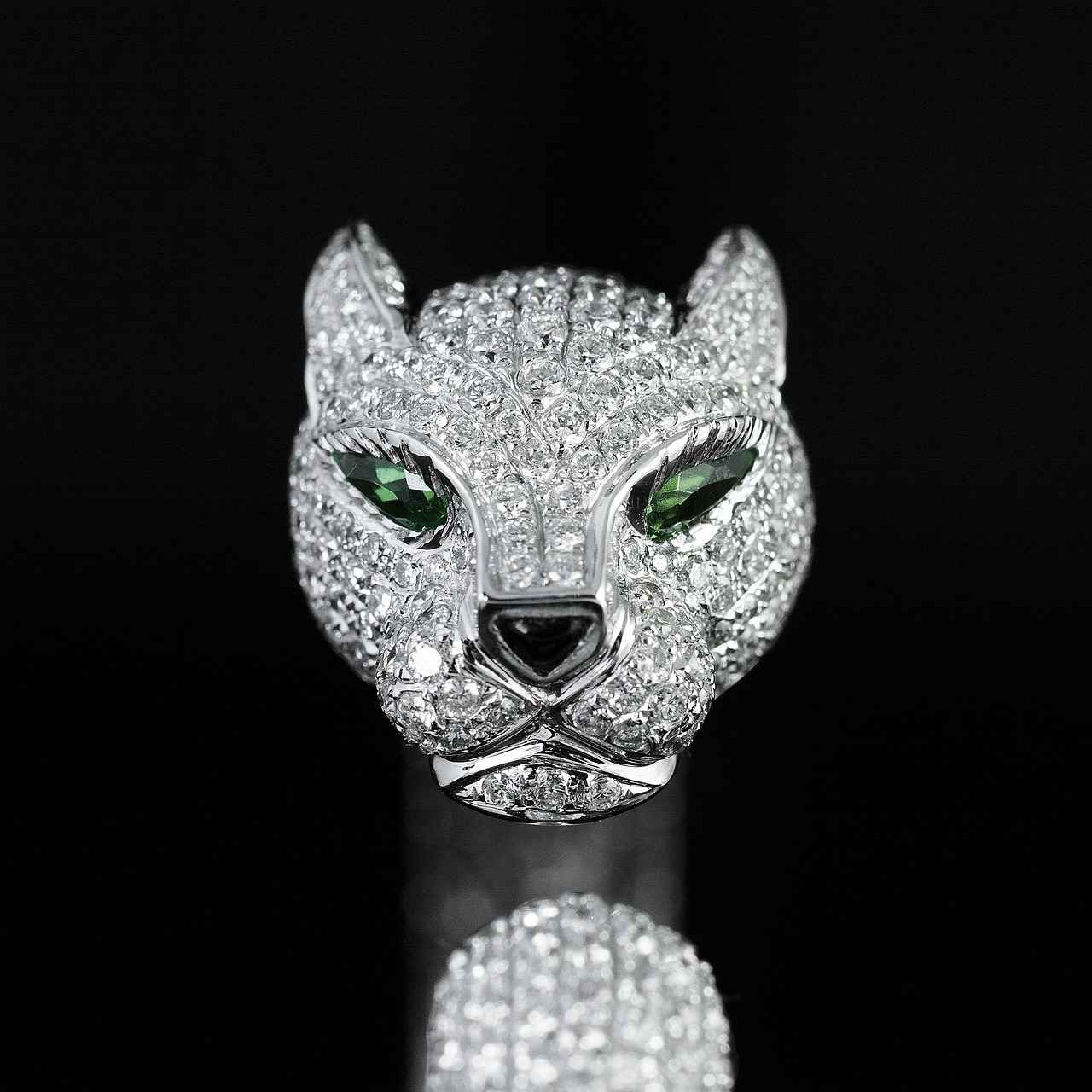
Why Is Color Important in Diamonds?
When it comes to diamonds, color is a critical factor that can significantly influence both their aesthetic appeal and market value. Understanding the importance of color in diamonds can help buyers make informed decisions and sellers maximize their resale potential.
Color refers to the presence of any hue in a diamond, which can range from completely colorless to shades of yellow or brown. The less color a diamond has, the more valuable it typically becomes. This is because diamonds that fall within the colorless range (graded D to F on the GIA scale) are highly sought after, making them more desirable in the resale market.
The GIA color grading scale categorizes diamonds from D (colorless) to Z (light yellow). Each grade reflects the diamond’s hue, with D being the most valuable. The demand for colorless diamonds is driven by their rarity and the perception that they possess superior beauty.
- D-F: Colorless – the most valuable and sought after.
- G-J: Near colorless – still desirable, but slightly less valuable.
- K-Z: Light yellow to brown – generally less desirable and lower in value.
Market preferences can shift over time, influencing the demand for specific color grades. For instance, while colorless diamonds have always been popular, some consumers increasingly appreciate fancy colored diamonds, which can command high prices despite their color. Understanding these trends can help sellers position their diamonds effectively.
Colorless diamonds are often preferred because they allow the cut of the diamond to shine through, enhancing its brilliance and fire. The absence of color means that light can pass through the diamond without interference, creating a more vibrant display of sparkle. This characteristic is particularly appealing to buyers who value the overall quality of the gemstone.
The resale value of a diamond is heavily influenced by its color grade. A diamond with a higher color grade will typically fetch a better price in the market. Sellers should keep in mind that while color is essential, it is just one of the 4Cs that determine a diamond’s overall value. Thus, a diamond with excellent cut and clarity but a lower color grade may still be appealing to certain buyers.
When selling diamonds, it is crucial to highlight the color grade and how it impacts the diamond’s overall quality. Providing potential buyers with a detailed certificate from a reputable grading organization can enhance trust and confidence in the purchase. Additionally, presenting the diamond in a way that showcases its brilliance can further attract buyers.
In summary, color is a vital aspect of diamond evaluation that significantly influences both beauty and market value. Understanding the nuances of color grading and its impact on resale value can empower both buyers and sellers in the diamond market.
Color Grading Scale Explained
When it comes to purchasing or selling diamonds, understanding the color grading scale is essential. This scale, developed by the Gemological Institute of America (GIA), categorizes diamonds based on their color, ranging from D (colorless) to Z (light yellow). The color of a diamond can significantly influence its overall value and desirability in the market.
The GIA color grading scale is a standard used by gemologists to evaluate the color quality of diamonds. The scale consists of 23 grades, starting from D and moving through to Z. Diamonds graded D to F are considered colorless to near colorless, making them the most sought after. As a result, these diamonds typically command higher prices due to their rarity and visual appeal.
Diamonds that fall within the D-F range are prized for their exceptional clarity and brilliance. The absence of color allows for maximum light reflection, enhancing the stone’s sparkle. Buyers often prefer these diamonds because they can appear more vibrant and luxurious, making them a popular choice for engagement rings and other fine jewelry.
The transition from colorless to light yellow occurs gradually. Diamonds graded G to J are still considered near colorless but may exhibit slight color when viewed under certain lighting conditions. As the grading continues down to Z, diamonds become increasingly yellow, which can affect their appeal and marketability.
Market demand for diamonds often fluctuates based on consumer preferences and trends. While colorless diamonds may currently be in high demand, certain buyers may seek out diamonds with a hint of color for unique or vintage styles. Understanding these trends can help sellers position their diamonds effectively in the market.
- Lighting Conditions: The way a diamond is viewed can impact its perceived color. Natural light often reveals the true color of a diamond, while artificial lighting can alter its appearance.
- Setting: The metal used in a diamond’s setting can also influence how its color is perceived. For example, a yellow gold setting may complement a diamond with a slight yellow hue, making it appear warmer.
- Cut Quality: The cut of a diamond can affect how light interacts with it, impacting the overall color perception. A well-cut diamond may mask slight color imperfections better than a poorly cut one.
When selecting a diamond, it’s essential to consider personal preference along with the color grade. Buyers should evaluate how the diamond looks in various lighting conditions and settings. Additionally, consulting with a reputable jeweler can provide insights into which color grade offers the best value for the buyer’s needs.
Understanding the GIA color grading scale is crucial for anyone looking to buy or sell diamonds. The color of a diamond plays a significant role in its overall value, desirability, and market demand. By being informed about the nuances of color grading, buyers and sellers can make more confident decisions in the diamond market.
How Color Affects Market Demand
The world of diamonds is not only defined by their physical characteristics but also by the ever-evolving preferences of consumers. One of the most significant aspects that influences market demand is the color of the diamond. Understanding how color affects market demand can empower sellers to position their diamonds strategically and maximize their resale value.
Color in diamonds is assessed based on the presence of any hue, with the most valuable diamonds being those that are colorless. The grading scale, established by the Gemological Institute of America (GIA), ranges from D (colorless) to Z (light yellow). Diamonds graded D-F are typically the most desirable, commanding higher prices in the market.
Market preferences can shift over time, influencing the demand for specific color grades. For instance, while colorless diamonds have historically been the most sought after, there has been a growing interest in fancy colored diamonds. These diamonds, which come in shades like blue, pink, and yellow, have captured the attention of collectors and investors alike, leading to increased demand.
- Fashion Trends: As fashion evolves, so do the preferences for diamond colors. Jewelers often report that certain colors become trendy, driven by celebrity endorsements and fashion shows.
- Symbolism: Different colors carry various meanings and symbolism. For example, blue diamonds are often associated with tranquility and loyalty, making them popular choices for engagement rings.
- Investment Potential: As consumers become more educated about the rarity of colored diamonds, there is a growing recognition of their investment potential. This shift in perception can significantly influence market demand.
To effectively position their diamonds in the market, sellers must stay informed about current color trends. Here are some strategies to consider:
1. **Market Research:** Regularly analyze market trends and consumer preferences regarding diamond colors.2. **Highlight Unique Features:** When selling a diamond, emphasize its unique color characteristics and rarity.3. **Educate Buyers:** Provide information on the grading scale and the significance of color in determining value.4. **Leverage Social Media:** Use platforms like Instagram and Pinterest to showcase diamonds and their colors, tapping into visual marketing.
Understanding how color affects market demand is crucial for anyone involved in the diamond industry. By recognizing the trends and preferences of consumers, sellers can position their diamonds effectively, ensuring that they meet market demands while maximizing their resale value. As the market continues to evolve, staying informed and adaptable will be key to success.

What Is Clarity and Its Significance?
When it comes to diamonds, clarity is a critical factor that significantly influences their overall value. It refers to the presence of internal or external imperfections, known as inclusions and blemishes, respectively. Understanding clarity is essential for both buyers and sellers, as it directly affects the desirability and resale potential of a diamond.
The clarity of a diamond is measured using a grading scale that ranges from Flawless (FL) to Included (I). This scale is recognized by organizations such as the GIA (Gemological Institute of America). Here’s a brief overview:
- Flawless (FL): No inclusions or blemishes visible under 10x magnification.
- Internally Flawless (IF): No inclusions, but minor blemishes are present.
- Very Slightly Included (VSI1 and VSI2): Inclusions are difficult to detect under 10x magnification.
- Slightly Included (SI1 and SI2): Inclusions are noticeable under 10x magnification but may be difficult to see with the naked eye.
- Included (I1, I2, and I3): Inclusions are visible to the naked eye, affecting the diamond’s overall appearance and value.
Higher clarity grades generally lead to greater value in the resale market. Diamonds with fewer imperfections are often more desirable to buyers, as they tend to exhibit better brilliance and visual appeal. Inclusions can interfere with light performance, diminishing the stone’s sparkle and overall beauty.
Inclusions can take various forms, each affecting clarity differently:
- Crystal inclusions: Small minerals or crystals trapped within the diamond.
- Feather inclusions: Internal cracks that resemble feathers.
- Cloud inclusions: A group of tiny crystals that create a cloudy appearance.
- Needle inclusions: Long, thin crystals that resemble needles.
Inclusions can significantly impact a diamond’s market appeal. Buyers often prefer stones with fewer inclusions, as they are perceived as higher quality. A diamond with a higher clarity grade can command a premium price, while one with noticeable inclusions may struggle to attract buyers.
While some inclusions are inherent to the diamond, certain treatments can enhance clarity. Techniques such as laser drilling or clarity enhancement can be used to reduce the visibility of inclusions. However, these treatments can also affect the diamond’s value and should be disclosed to potential buyers.
Clarity does not exist in isolation; it interacts with the other 4Cs—cut, color, and carat weight. For instance, a diamond with a lower carat weight but superior clarity may be more valuable than a larger stone with significant inclusions. Therefore, understanding how these elements work together is vital for assessing a diamond’s overall worth.
In conclusion, clarity is a fundamental aspect of diamond evaluation that significantly impacts resale value. By understanding the clarity grading scale, types of inclusions, and their effects on market appeal, both buyers and sellers can make informed decisions in the diamond marketplace.
Clarity Grading Scale Overview
The clarity grading scale is an essential aspect of diamond evaluation, significantly influencing both the beauty and the market value of a diamond. This scale ranges from Flawless to Included, with each grade providing a unique insight into the diamond’s internal and external characteristics. Understanding this scale is crucial for both buyers and sellers, as it directly impacts the perceived value of a diamond in the marketplace.
The clarity grading scale is a system used by gemological institutes, such as the GIA (Gemological Institute of America), to assess the presence of blemishes and inclusions in diamonds. These imperfections can affect a diamond’s visual appeal and overall value. The scale consists of several grades:
- Flawless (FL): No inclusions or blemishes visible under 10x magnification.
- Internally Flawless (IF): No inclusions, only surface blemishes visible under 10x magnification.
- Very Very Slightly Included (VVS1 and VVS2): Inclusions are very difficult to detect under 10x magnification.
- Very Slightly Included (VS1 and VS2): Inclusions are minor and can be seen with some difficulty under 10x magnification.
- Slightly Included (SI1 and SI2): Inclusions are noticeable under 10x magnification and may be visible to the naked eye.
- Included (I1, I2, and I3): Inclusions are obvious and may affect the diamond’s durability and appearance.
Clarity plays a vital role in determining a diamond’s resale value. Diamonds with higher clarity grades are generally more desirable and command higher prices. For instance, a Flawless diamond can fetch significantly more than a diamond with Included grading. This difference can be attributed to the visual appeal and rarity of higher-clarity stones.
Inclusions can detract from a diamond’s brilliance and fire. Even small inclusions can create visible flaws that can be distracting to the eye. Buyers often seek diamonds that appear clean and clear, making clarity a critical factor in their purchasing decisions. As such, diamonds with fewer inclusions tend to be more sought after in the resale market.
Current market trends indicate a growing preference for higher clarity diamonds. As buyers become more educated about the 4Cs, they increasingly value clarity as a key determinant of quality. This shift in consumer preferences has led to a rise in demand for diamonds with VVS and VS grades, while diamonds with lower clarity grades may struggle to maintain their value.
When selling diamonds, it is essential to highlight the clarity grade prominently. Providing potential buyers with detailed information about the diamond’s clarity can enhance their confidence in the purchase. Additionally, showcasing the diamond under appropriate lighting can help buyers appreciate its beauty and minimize the visibility of any inclusions.
In conclusion, understanding the clarity grading scale is crucial for anyone involved in the diamond market. By recognizing the differences in clarity grades, buyers and sellers can make informed decisions that reflect the true value of a diamond.
Impact of Inclusions on Resale Value
When it comes to diamonds, the clarity of a stone plays a crucial role in determining its overall value and market appeal. One of the most significant factors affecting clarity is the presence of inclusions, which are internal flaws or imperfections within the diamond. Understanding how these inclusions impact a diamond’s resale value is essential for both sellers and buyers.
Inclusions can be caused by a variety of factors, including the diamond’s formation process deep within the Earth. These imperfections may take the form of tiny crystals, bubbles, or even fractures. While some inclusions are barely visible to the naked eye, others can significantly affect the diamond’s appearance and brilliance. The more pronounced the inclusion, the more likely it is to detract from the diamond’s overall beauty.
Inclusions can diminish a diamond’s beauty by interfering with light reflection. A diamond with numerous inclusions may appear dull or less radiant compared to a flawless stone. For instance, a diamond that is otherwise of high quality but contains visible inclusions may not attract buyers willing to pay top dollar. This is because potential buyers often prioritize visual appeal when making a purchase.
The clarity grading scale ranges from Flawless (no inclusions visible under 10x magnification) to Included (inclusions visible to the naked eye). Diamonds that fall into the higher clarity categories, such as VVS (Very Very Slightly Included) or VS (Very Slightly Included), tend to command higher prices in the resale market. In contrast, diamonds with noticeable inclusions are likely to be valued significantly lower.
Market demand for diamonds can fluctuate based on consumer preferences and trends. For instance, certain buyers may prioritize clarity over size, leading to a higher demand for diamonds with minimal inclusions. Sellers should be aware of these trends and adjust their pricing strategies accordingly. Understanding the current market landscape can help sellers position their diamonds more effectively.
Sellers can take several steps to mitigate the negative impact of inclusions on resale value:
- Transparency: Provide detailed information about the diamond’s clarity grade and the nature of its inclusions.
- Certification: Obtain a certification from a reputable gemological laboratory, which can enhance buyer confidence.
- Highlight Strengths: Focus on other positive attributes of the diamond, such as its cut or color, to create a more appealing overall package.
Inclusions can significantly affect a diamond’s beauty and resale value. Sellers should be mindful of how these imperfections impact market appeal and pricing. By understanding the implications of inclusions and leveraging effective selling strategies, sellers can enhance their chances of achieving favorable resale outcomes.

Carat Weight: How Does It Affect Value?
When it comes to diamonds, understanding the carat weight is crucial for both buyers and sellers. Carat weight not only influences the perceived size of a diamond but also plays a significant role in its overall value. In this section, we will delve into the complexities of carat weight and how it impacts the diamond market.
Carat weight refers to the weight of a diamond, with one carat equivalent to 200 milligrams. This measurement is a primary factor in determining a diamond’s size and value. Generally, larger diamonds are more desirable, but it’s essential to understand that the relationship between carat weight and price is not straightforward.
The pricing of diamonds tends to increase exponentially as carat weight increases. For instance, a 1-carat diamond may be significantly less expensive than a 2-carat diamond, even if the latter is only twice as heavy. This non-linear relationship arises because larger diamonds are rarer, and their demand often outstrips supply.
- Current Preferences: Market trends indicate that consumers often prefer diamonds in specific weight ranges, such as 1.0 to 1.5 carats. Understanding these preferences can help sellers price their diamonds effectively.
- Psychological Pricing: Diamonds weighing just above a whole number, like 1.5 or 2.0 carats, can command significantly higher prices due to perceived value.
While carat weight is essential, it is not the only factor that determines a diamond’s value. The 4Cs—Cut, Color, Clarity, and Carat weight—interact to affect the overall desirability of a diamond. For example, a smaller diamond of exceptional quality can be more valuable than a larger stone with visible inclusions or poor color.
When evaluating a diamond, consider the following:
1. **Cut Quality:** A well-cut diamond can appear larger than its actual carat weight due to better light performance.2. **Color and Clarity:** Higher-quality stones in these categories can enhance the overall appeal, even if they are smaller in size.3. **Personal Preference:** Ultimately, the buyer's personal taste plays a significant role in determining value.
For sellers, understanding how carat weight affects value is critical for successful transactions:
- Highlight Unique Features: Emphasize the diamond’s quality attributes alongside its carat weight to attract potential buyers.
- Stay Informed: Keep up with market trends and adjust pricing strategies accordingly to remain competitive.
- Provide Certification: Ensure that the diamond comes with a reliable grading report to validate its quality and enhance trust with buyers.
In summary, carat weight is a vital aspect of a diamond’s value, but it should be assessed in conjunction with the other 4Cs. A comprehensive understanding of these factors will not only help buyers make informed decisions but also assist sellers in maximizing their diamonds’ market potential.
Market Trends in Carat Weight
The diamond market is dynamic, influenced by various factors, including carat weight. Understanding is essential for both sellers and buyers. This knowledge can significantly impact pricing strategies and resale values.
Carat weight refers to the weight of a diamond, with one carat equaling 200 milligrams. This measurement is crucial as it directly correlates with the size of the diamond, which is a significant factor in its overall value. Generally, larger diamonds are more desirable and command higher prices. However, the relationship between carat weight and price is not always straightforward, as other factors like the 4Cs (Cut, Color, Clarity, and Carat weight) also play a vital role.
Recent trends indicate that buyers are gravitating towards specific carat weights. For instance, diamonds weighing between 1.0 and 1.5 carats have seen a surge in popularity. This preference can be attributed to a balance between size and cost, making these diamonds a sweet spot for many consumers. Additionally, diamonds in the 2.0 to 2.5 carat range are also desirable, especially among luxury buyers looking for more significant pieces.
Understanding how carat weight influences resale value is crucial for sellers. Diamonds that fall into popular weight categories tend to retain their value better than those that do not. For example, a diamond weighing exactly 1.0 carat may sell for significantly more than a 0.95-carat diamond, despite the minimal weight difference. This phenomenon is often referred to as the “magic carat weight,” where certain weights are perceived as more valuable by buyers.
Sellers should conduct thorough research to understand current market trends regarding carat weight. Pricing diamonds competitively involves analyzing recent sales data and understanding consumer preferences. Utilizing platforms that track diamond prices can provide valuable insights into how similar diamonds are priced based on their carat weight. This information helps sellers price their diamonds appropriately, ensuring they remain competitive in the market.
While carat weight is crucial, it’s essential to remember that the 4Cs collectively determine a diamond’s value. A smaller diamond with superior quality in terms of cut, color, and clarity can sometimes be more valuable than a larger diamond of lesser quality. Buyers are increasingly educated and often prioritize quality over size, making it imperative for sellers to highlight the overall quality of their diamonds.
As consumer preferences evolve, it’s essential for sellers to stay informed about potential shifts in the market. Factors such as economic conditions, fashion trends, and cultural influences can affect what buyers are looking for in terms of carat weight. Sellers who adapt to these changes can better position their diamonds to meet market demands.
Understanding current market trends regarding carat weight is vital for anyone involved in buying or selling diamonds. By staying informed and adapting to consumer preferences, sellers can price their diamonds competitively and maximize their resale value. Ultimately, balancing carat weight with the overall quality of the diamond will lead to better outcomes in the competitive diamond market.
Balancing Carat Weight with the 4Cs
When it comes to diamonds, understanding the intricate relationship between carat weight and the other 4Cs—Cut, Color, and Clarity—is essential for both buyers and sellers. While carat weight often garners the most attention, it is crucial to recognize that the overall value of a diamond is determined by the interplay of all four factors. This article delves into how balancing carat weight with the other 4Cs can significantly influence a diamond’s appeal and resale value.
Carat weight refers to the size of the diamond, and it is a primary factor that influences its price. Generally, larger diamonds are more desirable, leading to higher market prices. However, it is important to note that the relationship between carat weight and price is not straightforward. For instance, a diamond weighing 1.5 carats may not be three times more expensive than a 0.5-carat diamond. Instead, the price often increases exponentially with size, especially at popular weight benchmarks.
The cut of a diamond is arguably the most critical factor influencing its brilliance and sparkle. A well-cut diamond can appear larger and more radiant than its actual carat weight suggests. For example, a 0.9-carat diamond with an excellent cut may outshine a 1.2-carat diamond with a poor cut, making the former more valuable in the eyes of buyers.
- Color: The color grade of a diamond can also impact its perceived value. A smaller diamond that is colorless (graded D-F) may be more sought after than a larger diamond with noticeable color (graded G-Z). This means that a 0.75-carat colorless diamond could command a higher price than a 1-carat diamond with a yellow tint.
- Clarity: Inclusions and blemishes can detract from a diamond’s beauty. A smaller diamond with a clarity grade of VS1 (Very Slightly Included) may be more desirable than a larger diamond rated SI2 (Slightly Included). Buyers often prioritize clarity, leading to higher resale values for diamonds that are smaller but of superior quality.
Understanding current market trends is vital for sellers. Consumers often have specific preferences regarding carat weight, cut quality, color, and clarity. For example, many buyers are now leaning towards ethically sourced diamonds, which can also affect their willingness to pay more for stones that meet their ethical standards, regardless of size.
Moreover, the popularity of smaller, high-quality diamonds has surged in recent years. This trend suggests that a diamond’s overall quality can outweigh its carat weight. Sellers should focus on highlighting the strengths of all four Cs when marketing their diamonds, as this can create a more compelling narrative for potential buyers.
To maximize the resale value of a diamond, sellers should:
- Provide clear documentation of the diamond’s grading report from a reputable gemological laboratory.
- Emphasize the diamond’s unique characteristics, such as exceptional cut quality or color grading.
- Stay informed about market trends and adjust pricing strategies accordingly.
- Utilize high-quality images that showcase the diamond’s brilliance and clarity.
In conclusion, while carat weight is a significant factor in determining a diamond’s value, it is the harmonious balance between all four Cs that truly defines a diamond’s worth. A smaller diamond with superior quality can often surpass a larger, lower-quality stone in terms of market value and desirability. By understanding and leveraging these dynamics, both buyers and sellers can make informed decisions in the diamond market.
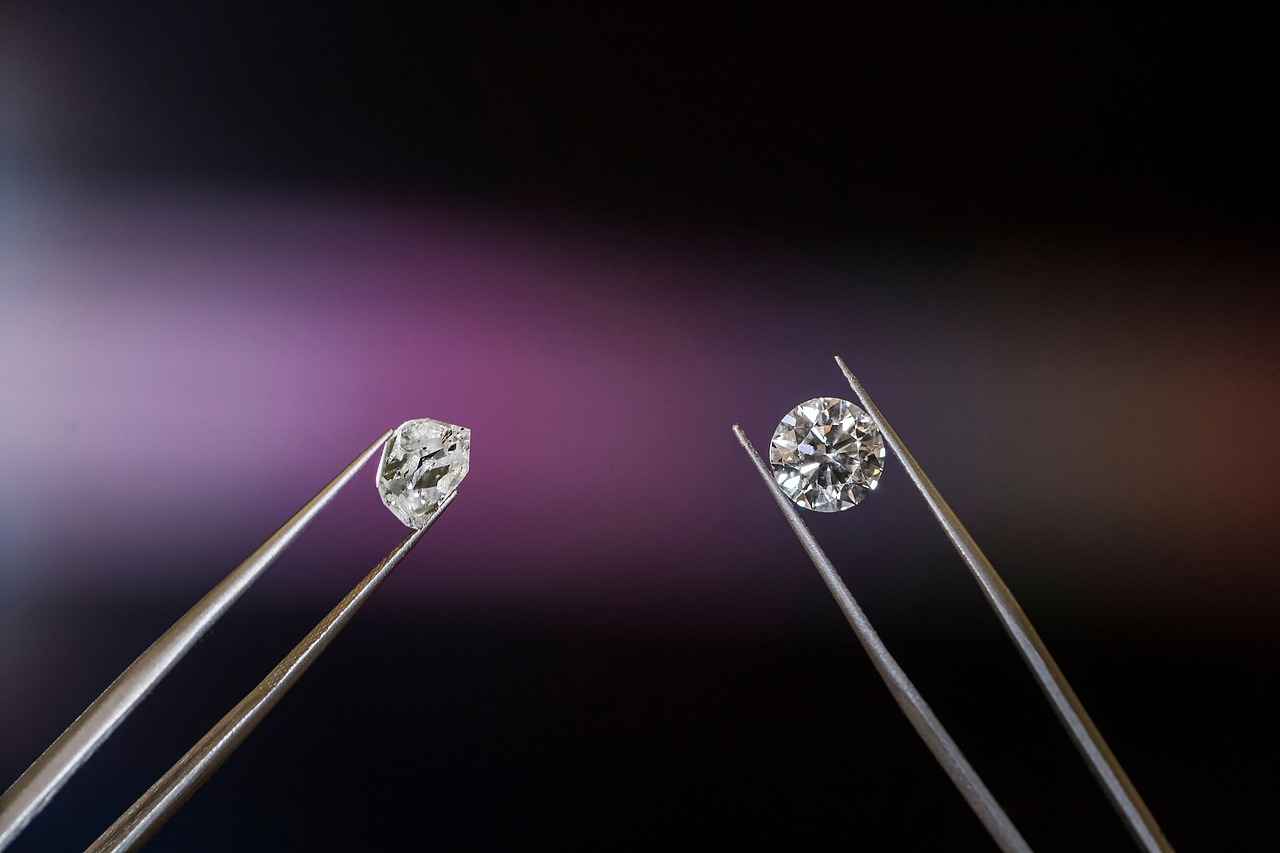
How Do the 4Cs Affect Resale Value?
The resale value of a diamond is influenced by a multitude of factors, but the 4Cs—Cut, Color, Clarity, and Carat weight—are the most critical. Each of these elements contributes to the overall desirability and marketability of a diamond, making them essential for anyone looking to buy or sell.
The 4Cs serve as the universal standard for assessing diamond quality. Understanding these criteria is vital for both buyers and sellers. A diamond’s Cut determines its brilliance, while Color affects its visual appeal. Clarity relates to the presence of imperfections, and Carat weight signifies its size. Collectively, they form the basis for a diamond’s value.
The Cut of a diamond is arguably the most important factor affecting its resale value. A diamond that is cut to precise proportions will reflect light beautifully, enhancing its sparkle and allure. This characteristic makes well-cut diamonds highly sought after in the market.
Cut grades range from Excellent to Poor. Higher grades indicate better light performance, which can significantly enhance a diamond’s resale value. Buyers are generally more inclined to pay a premium for diamonds with superior cut grades.
The Color of a diamond refers to the presence of any hue. Colorless diamonds are typically more valuable, as they are rarer. The GIA color grading scale ranges from D (colorless) to Z (light yellow), with D-F diamonds commanding higher prices due to their desirability.
Market preferences can change over time, affecting the demand for specific color grades. Sellers should stay informed about these trends to effectively position their diamonds for resale.
Clarity measures the presence of internal or external flaws in a diamond. Higher clarity grades, such as Flawless or Internally Flawless, usually result in greater value. Understanding the clarity grading scale can help both buyers and sellers assess a diamond’s worth accurately.
Inclusions can detract from a diamond’s beauty and value. Sellers should be aware of how these imperfections impact market appeal and pricing, as diamonds with fewer inclusions tend to fetch higher prices.
Carat weight is a crucial determinant of a diamond’s size and value. Larger diamonds are often more sought after, but the relationship between carat weight and price is complex. A smaller diamond of exceptional quality can sometimes be more valuable than a larger diamond with inferior characteristics.
Understanding current market trends regarding carat weight can help sellers price their diamonds competitively. Buyers often have preferences for specific weights, which can significantly impact resale value.
The cumulative effect of the 4Cs is significant in determining a diamond’s resale value. Each factor contributes to the overall desirability and marketability of the diamond. For instance, a diamond with a high cut grade but lower carat weight might still outperform a larger diamond with poor cut quality.
Market demand fluctuates based on consumer preferences and trends. Sellers should stay informed about these shifts to maximize their diamonds’ resale potential. Highlighting the strengths of each diamond’s 4Cs can enhance buyer confidence and improve resale outcomes.
When selling a diamond, it’s essential to provide detailed information about its 4Cs. This transparency can build trust with potential buyers, ultimately leading to better resale outcomes.
Understanding Market Demand for the 4Cs
In the diamond market, consumer preferences are not static; they are influenced by a myriad of factors that can change over time. This variability in market demand can have a profound impact on the resale potential of diamonds. As a seller, it is crucial to stay attuned to these shifts to ensure you are maximizing the value of your investment.
Consumer preferences in the diamond industry can fluctuate due to trends in fashion, cultural influences, and even economic conditions. For example, certain colors or cuts may become popular due to celebrity endorsements or social media trends, which can lead to increased demand for those specific styles. Additionally, the rise of ethical sourcing has also changed what consumers prioritize, with many opting for conflict-free diamonds or lab-grown alternatives.
- Follow Industry Reports: Regularly review reports from reputable organizations like the Gemological Institute of America (GIA) or the International Gemological Institute (IGI).
- Engage with Retailers: Establish relationships with jewelers and retailers who can provide insights into current consumer preferences.
- Utilize Online Platforms: Social media and online marketplaces can offer real-time data on trending styles and consumer interests.
The 4Cs—Cut, Color, Clarity, and Carat weight—are fundamental in determining a diamond’s value. However, their importance can vary based on current market demand. For instance, if a particular cut is trending, diamonds that feature that cut may see a spike in their resale value, while others may languish in the market.
To maximize resale potential, sellers should focus on identifying which features of the 4Cs are currently in high demand. Here are some considerations:
- Cut: Well-cut diamonds that exhibit exceptional brilliance tend to attract more buyers.
- Color: Colorless diamonds (D-F range) are often favored, but certain colored diamonds can also command high prices based on current trends.
- Clarity: Higher clarity grades typically yield better resale values, but market demand can sometimes favor lower clarity stones if they possess unique characteristics.
- Carat Weight: Larger diamonds are generally more desirable, but the market often favors specific weights, so understanding current preferences is key.
To effectively navigate the diamond resale market, sellers should consider the following strategies:
- Highlight Unique Features: Emphasize any unique characteristics of your diamond that align with current trends.
- Provide Documentation: Offering certification and detailed information about the diamond’s 4Cs can instill confidence in potential buyers.
- Leverage Online Marketplaces: Utilize platforms that cater to current trends and consumer preferences to reach a wider audience.
By staying informed about market demand and consumer preferences, sellers can position their diamonds more effectively, enhancing their resale potential. Knowledge of the 4Cs and the current market landscape is essential for anyone looking to sell diamonds successfully.
Tips for Selling Diamonds Based on the 4Cs
When it comes to selling diamonds, understanding the 4Cs—Cut, Color, Clarity, and Carat weight—is essential for maximizing value and attracting buyers. Each of these characteristics plays a crucial role in determining a diamond’s overall quality and resale potential. Below are some effective strategies for highlighting these attributes to enhance your selling experience.
The cut of a diamond is not merely about its shape; it significantly impacts how light interacts with the stone. A diamond with a superior cut can exhibit exceptional brilliance and sparkle, making it more desirable to buyers. Here are some tips for emphasizing the cut:
- Showcase Cut Grades: Clearly explain the diamond’s cut grade, whether it’s Excellent, Very Good, or Good. This information helps buyers understand the quality of the diamond.
- Visual Aids: Use high-quality images or videos that capture the diamond’s brilliance and fire, demonstrating how light reflects off its facets.
Color is another vital factor that can significantly influence a diamond’s value. The less color present, the more valuable the diamond typically is. To effectively sell a diamond based on its color:
- Provide a Color Grading Chart: Include a visual representation of the GIA color grading scale to help buyers understand where the diamond falls.
- Discuss Market Trends: Inform potential buyers about current market preferences for color grades, as these can shift over time.
Clarity measures the presence of internal or external imperfections in a diamond. A higher clarity grade usually correlates with greater value. To enhance your selling strategy:
- Explain Clarity Grades: Clearly outline the diamond’s clarity grade, from Flawless (IF) to Included (I), so buyers can gauge its quality.
- Highlight Inclusions: If the diamond has minor inclusions, provide detailed photographs and descriptions to help buyers understand their impact on the stone’s beauty.
Carat weight is a significant determinant of a diamond’s size and value. Larger diamonds are often more sought after, but it’s essential to balance carat weight with the other 4Cs:
- Market Preferences: Discuss current trends in carat weight preferences, as buyers may have specific weights they’re looking for.
- Value Per Carat: Educate buyers on how the price per carat can vary based on the quality of the other 4Cs, making smaller, high-quality diamonds potentially more valuable.
To optimize your selling strategy, it’s crucial to communicate effectively with potential buyers. Here are some practical insights:
- Provide Detailed Documentation: Offer certification from reputable gemological laboratories, which can enhance buyer trust and confidence.
- Be Transparent: Openly discuss the strengths and weaknesses of the diamond, as honesty can foster trust and encourage buyers to make informed decisions.
By focusing on the strengths of each diamond’s 4Cs and providing detailed, transparent information, sellers can significantly enhance buyer confidence and improve resale outcomes. Remember, a well-informed buyer is more likely to appreciate the value of the diamond, leading to a successful sale.
Frequently Asked Questions
- What are the 4Cs of diamonds?
The 4Cs stand for Cut, Color, Clarity, and Carat weight. These criteria are essential for evaluating a diamond’s quality and play a crucial role in determining its value in the market.
- How does the cut of a diamond affect its value?
The cut influences how well a diamond reflects light, which directly impacts its brilliance and overall appeal. A well-cut diamond can significantly enhance its resale value.
- Why is color important when buying a diamond?
Color affects a diamond’s desirability; the less color present, the more valuable the diamond typically is. Diamonds graded D-F are the most sought after, commanding higher prices.
- What does clarity mean in diamonds?
Clarity refers to the presence of imperfections, or inclusions, within a diamond. Higher clarity grades usually result in greater value and desirability in the resale market.
- How does carat weight influence a diamond’s price?
Carat weight is a key factor in determining a diamond’s size and value. Generally, larger diamonds are more sought after, but it’s important to balance carat weight with the other 4Cs for accurate valuation.
- How can I maximize my diamond’s resale value?
To maximize resale value, highlight the strengths of your diamond’s 4Cs, stay informed about market trends, and present detailed information to enhance buyer confidence.

